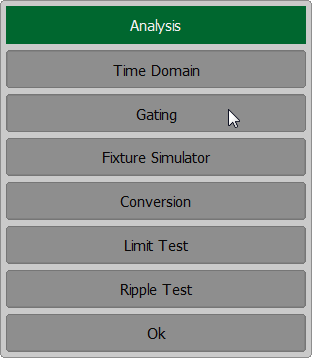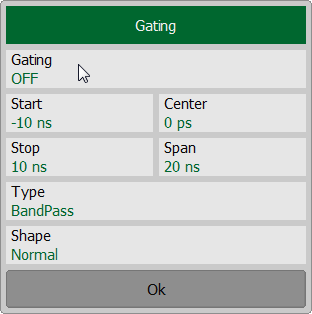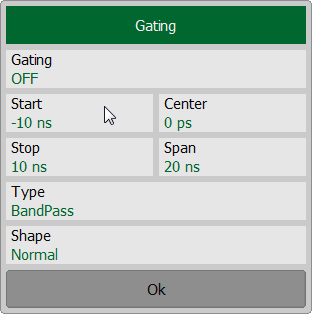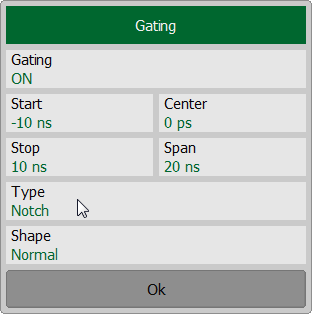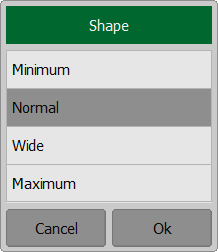Time domain gating is a function that mathematically removes unwanted responses in the time domain. The function performs a time domain transformation, selects the region in the time domain, deletes the response inside (or outside) the region and transforms back to the frequency domain. The function allows the user to remove spurious effects of the fixture devices in the frequency response, if the useful signal and spurious signal are separable in the time domain. The function is applicable for reflection coefficients (S11, S22 etc.) measurement only.
The recommended procedure is as follows:
•Use the time domain function for viewing the layout of useful and spurious responses.
•Enable the time domain gating and set the gate position to remove as much of spurious response as possible.
•Disable the time domain function and view the response without spurious effects in frequency domain.
The function involves two types of time domain gating:
•Bandpass — removes the response outside the gate span.
•Notch — removes the response inside the gate span.
The sharp gate shape leads to ringing effect in the frequency domain. To reduce the ringing the gate shape can be smoothed. The following gate shapes are offered:
•Maximum
•Wide
•Normal
•Minimum
The minimum window has a sharp shape. The maximum window has a more smoothed shape. From minimum to maximum window shape, the sidelobe level increases and the gate resolution decreases. The choice of the window shape is always a trade-off between the gate resolution and the level of spurious sidelobes. The parameters of different window shapes are represented in the table below.
Window Shape |
Bandpass Sidelobe Level |
Gate Resolution |
|---|---|---|
Minimum |
– 48 dB |
|
Normal |
– 68 dB |
|
Wide |
– 57 dB |
|
Maximum |
– 70 dB |
|
Time Domain Gate Activation
To enable/disable time domain transformation function, use the Analysis > Gating > Gating softkeys on left menu bar.
|
note |
Time domain gating function is accessible only in linear frequency sweep mode. |
Time Domain Gate Span
To define the span of time domain gate, set its start and stop values.
To set the start and stop limits of the time domain gate, use the Analysis > Gating > Gating softkeys on left menu bar. Click on the Start or Stop field and enter the value using the on-screen keypad. To set the center and span of the time domain gate, use the Center or Span softkeys.
|
Time Domain Gate Type
To select the type of the time domain window, use the Analysis > Gating > Type softkeys on left menu bar. Toggle the type between Bandpass and Notch.
|
Time Domain Gate Shape Setting
To set the time domain gate shape, use the Analysis > Gating > Type softkeys on left menu bar. Select the required shape from the Shape list.
|

